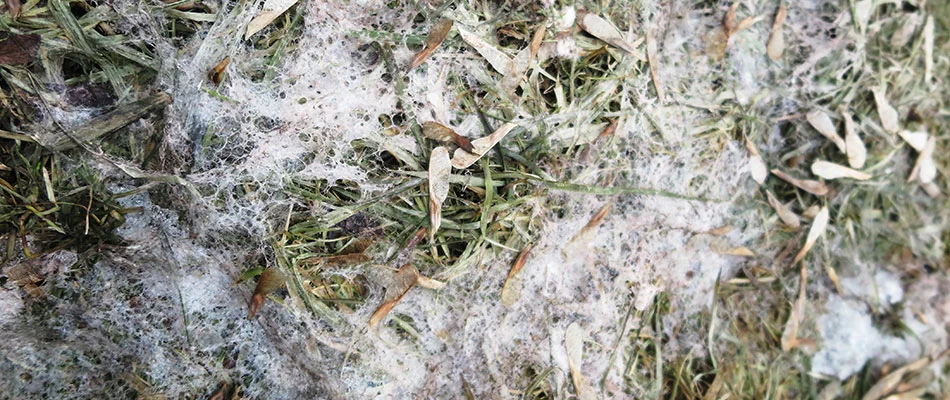While it's customary to "hit the snooze button" on most lawn-related duties in the winter, if you're in Carmel, Indiana, there is something you should address beforehand - snow mold. This lawn disease impacts lawns during the winter, but you won't see the damage until the snow melts in the spring. However, many property owners unknowingly encourage its occurrence in the fall.
Given the amount of damage, snow mold can do to your lawn, it helps to get ahead of it early. Before going into how to prevent it through proper mowing, early fall fertilizer treatments, and leaf removal, let's look at the two major varieties of snow mold and whether they're common enough in Indiana to necessitate concern on your part.
There are two different types of snow mold.
Snow mold is a lawn disease sometimes seen in lawns exposed to snow or cool moisture for extended periods. This disease leads to patches of dead grass and is caused by lawn fungi. There are generally two fungi that cause it: Typhula incarnata, which causes gray snow mold, and Microdochium nivale, which causes pink snow mold. Though both lawn diseases look similar, there are some differences.
Gray snow mold - If you've ever seen white and gray patches of thinning or dead grass after the snow melted, there's a good chance gray snow mold was at play. Some say this condition resembles thinning cotton.
Pink snow mold - If you've ever noticed white and pink patches of dead grass in a lawn just after the snow melted, it may have been due to pink snow mold. Unlike gray mold, this version can also attack the roots and make growing new grass difficult.
How common is snow mold in Indiana?
While both pink and gray snow mold are relatively uncommon in Indiana, they can and do sometimes occur. Snow cover is required for gray snow mold but not for pink snow mold. You only need temperatures between 55 to 35 Fahrenheit, along with moisture and heavy leaf or grass cover, for pink snow mold to thrive. Pink snow mold tends to be more common in Kentucky bluegrass, annual bluegrass, and ryegrasses, all prevalent in Indiana.
How do you prevent and treat snow mold?
As a property owner, there are specific steps you can take to minimize the occurrence of pink or gray snow mold. Here are a few ways to prevent snow mold:
- Mow your grass lower in the fall
- Schedule fall leaf removal services
- Apply an early fall fertilizer treatment
If your lawn already shows signs of a snow mold infection, you can loosen the affected areas with a rake so the sun and air can dry them out. If the damage is severe, lawn maintenance specialist may be able to treat your lawn with a fungicide.
Removing piles of snow from your property is a great way to take a proactive approach to snow mold prevention.
Get ahead of snow mold with our fertilization, mowing, and leaf removal services. Call us!
Don't let snow mold put a damper on your lawn this spring. Get a jump on it by applying the preventative steps we've outlined above. And if you need a helping hand, we've got you covered! At Precision Cutz Lawn Care, we offer our high-quality lawn mowing, fertilizer treatments, and fall leaf removal services to residential, commercial, and HOA properties.
If you're in Carmel, Fishers, Westfield, or nearby in Indiana, let's get a head start on snow mold by putting preventative measures into place before winter hits. But remember, winter is not far away, so don't put it off. Contact us today at 317-965-7868 to schedule our fall leaf removal service!



Comments (0)
Thanks for your comment!
Thanks for your feedback! Your comments have been successfully submitted! Please note, all comments require admin approval prior to display.
Error submitting comment!
There is a problem with your comment, please see below and try again.